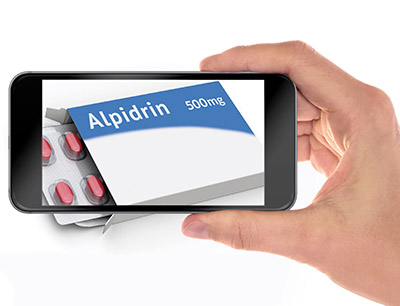
Pharmaceutical product counterfeiting is a reality, and for some even a life threatening one. According to a 2019 report from the Organisation for Economic Co-operation and Development “OECD ”, trade in fake goods is now 3.3% of world trade and rising. Africa is one of the biggest sufferers from counterfeiting and people are not only dying due to the lack of drugs, but also because counterfeits often have no active ingredients or contain poisonous substances.
Economically speaking, it is impossible to protect pharmaceutical products the same way as banknotes. Furthermore, because there are hundreds of pharmaceutical companies, there is not one single counterfeit protection approach, as there is for banknotes. For instance, take a 1$ bill. This bill is known and used all over the world and has the same security features all over the world. For pharmaceutical products the situation is more complicated. Each pharma company decides independently how they want to protect their products may even use different packaging or anti counterfeit measures in different markets. This means that end-users would have to be trained on dozens of security features and to know which feature is on which packaging, a concept which is clearly not feasible. To illustrate the problem, let us just recall the case of a pharmaceutical product where the counterfeit had a hologram and the genuine not. A patient with a prescription would of course pick the packaging with the hologram, which in this case was the fake, what a dilemma.
A pragmatic solution
By now you should have realized that there is no holy grail and that it all comes down to a balanced compromise. From my point of view this means:
- Pharmaceutical companies, importers, and resellers must work together to build highly secure supply chains. These companies need to work with law enforcement, customs, and border protection.
- Protection of pharmaceutical products should be in the following manner:
o Tamper proof/single open packaging
o Invisible/covert security feature allowing the pharmaceutical companies to effectively monitor and control the supply chain
o Add UIDs (unique identifiers) because of legislative requirements
- Train users to buy only from trusted sellers.
The above measures are not easy to put in place. In particular, securing the supply chain is complex due to its interdisciplinary nature, but the approach has proven to be effective. For instance, in Switzerland counterfeiting of pharmaceutical products is not a topic of concern and patients buy products through a very well controlled network of pharmacies.
Security through obscurity
Adding an invisible security feature has multiple advantages and it is also interesting to note that for banknotes, central banks heavily rely on invisible security features to identify counterfeits. Using covert security features for pharmaceutical products means:
- No impact on product branding
- No approval of design changes when introducing the security feature
- Security features can be switched, removed, added without much hassle
- Counterfeiters are usually not aware of invisible security features and are therefore less likely to attack/copy/counterfeit them. This is called security through obscurity. At AlpVision we have been doing this for 20 years and never had a single counterfeit.
- No lock-in. A visible security feature on a product is difficult to remove later (for instance if it has been counterfeited) as end-users will become suspicious. This does not happen with covert security features.
- Covert security feature can be put everywhere on the packaging, making it very robust. Even worn and torn packages can be analyzed.
There are many covert security features on the market. However only a few are well adapted for pharmaceutical products. Those features need to be:
- Suitable for very high volumes
- Easy to deploy and implement
- High stability during production
- Low logistic complexity
- Easy product authentication
The Cryptoglyph, invented by the Swiss company AlpVision in 2001, has become the de-facto standard for covert security features on large volume products. The Cryptoglyph belongs to the group of digital security features, which means that it can be considered as part of the artwork and does not require any specific consumable, such as special ink. Authentication is performed using regular smartphones and a dedicated application.
Who Cares
The purpose of this small article was not to indoctrinate the reader, but rather highlight the complexity of the subject and initiate a thinking process. My experience taught me that the pharmaceutical domain is very heterogenous and no two companies are alike. Custom solutions for business activities are the rule and strategic decisions are often taken under the influence of internal political agendas and power plays between employees. I am therefore convinced that for an effective and efficient strategy with respect to anti-counterfeiting, pharmaceutical companies should put in place an internal, independent task force, with budget, human resources, and the power to decide and implement. It will not only make the world a better, but a more authentic place.
Guest article by Dr. Martin Kutter
Sources: